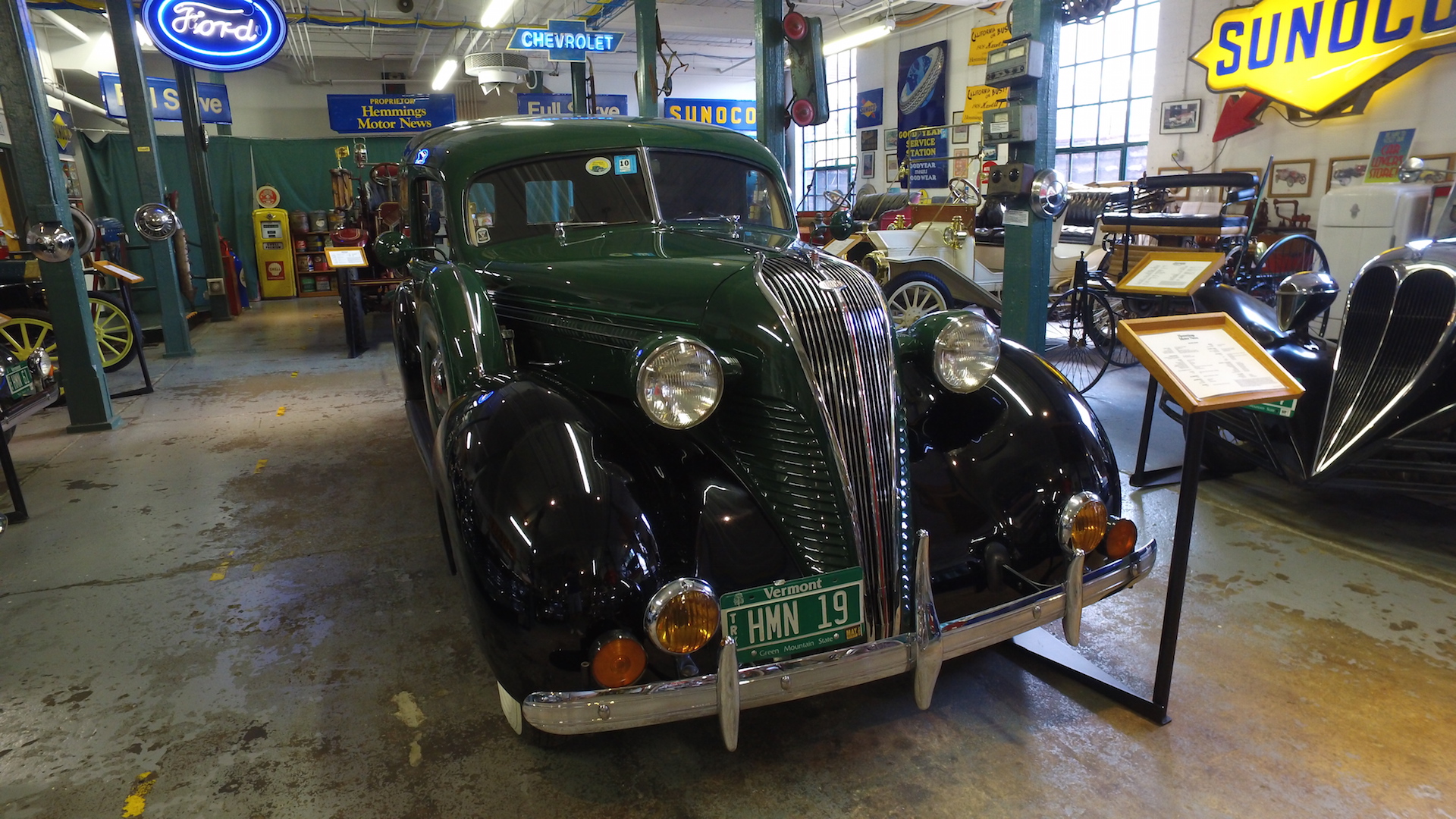

We may earn revenue from the products available on this page and participate in affiliate programs. Learn more ›
The Hemmings Motor News garage in Bennington, Vermont, isn’t a museum. The owners officially call it a “display.” There are no stanchions keeping you at bay, no lurking security guards breathing down your neck. You’re free to touch anything you please as you explore. Want to open the door to that 1960 Cadillac Series 62 coupe? Go ahead. It’s unlocked.
Laminated one-pagers on stands explain most of the vehicles, though ask a staffer a question and you’ll end up with a personal tour guide who’ll immerse you in a far deeper dive into everything within the space’s walls. It’s a perfect place for older gearheads who want a nostalgic experience, or for younger ones, looking to soak up some knowledge about eras past.
With an eclectic crop of three dozen-plus cars, trucks and motorcycles, there’s plenty of impressive vintage sheet metal to behold. However, a few uncommon machines stood out amongst the herd and we had to share.
1924 American-LaFrance Pumper Truck

,
This Type 38/39 triple combination pumper was the first motorized fire truck in Bennington. Found in the possession of a New Jersey collector, it was returned to its home state a few years ago. It ran in parades, until a crack in the one of the inline-six cylinders sidelined the beast. New, it cost $10,750, boasted 85 horsepower and had a top speed of 35 miles per hour, while consuming 6 miles per gallon. The body was sheet metal over angle iron and hardwood and the massive rims – wooden artillery types – housed 38” tires in the front and 40” in the rear. Everything was manufactured in-house, including the steel-ladder chassis, the T-head engine, and the pumper.
1938 American Bantam

,
The Bantam was the byproduct of a reorganized American Austin Car Company, from Butler Pennsylvania. They tapped famed auto designer Alexis de Sakhnoffsky who is credited with the body lines, including that smooth hood, rounded grille and curved fenders. The sum of his efforts cost Bantam a meager $300 and the line was put into production. The engine, a 46 cid inline-four, boasted a whole 20 horsepower and 35 lb-ft of torque, and would get the owner up to about 40 miles an hour on the highway.
The cost for a new Bantam was $550 and they were only made from 1937 through 1941, with a total of about 6,000 cars completed. In 1941, Bantam was responsible for the development of the first Jeep, though the contract for production was awarded to Willys-Overland by the War Department. Without the Jeep money flowing in, Bantam shuttered their passenger vehicle production. Fun fact: the 1938 Bantam was an inspiration for Donald Duck’s car.
1934 Brewster-Ford Town Car

,
Brewster & Co. was a Long Island City, New York, coachbuilder that most famously supplied the bodies for Rolls-Royce in the early 1910s. Sales of their meticulously-built Rolls-Royces rapidly outpaced sales of their proprietary model, the Brewster Knight, but when the Great Depression arrived, the wealthy were looking to be more stealthy and started eschewing the opulent and recognizable Rolls-Royce. In response, Brewster acquired 135 Ford V8 roadster chassis and designed a completely new body for it, a stately and striking coach, but also a cheaper one. The finished product sold for only $3,500.

,
With sharp angles in the grille and long sweeping front fenders, the Brewster Town Car was a hit at launch, though it failed to accomplish the goal of aiding the rich in flying under the radar. Only 300 were built and sold, each with a 221 cid Ford V8, good for 85 horsepower and 145 lb-ft of torque. Though the Ford name was omitted from the official title, Edsel Ford was a personal fan and bought the first finished Town Car. All the magnates of yesteryear owned one, including the Astors and the Rockefellers.
1955 BMW Isetta 250

,
When Italian refrigerator manufacturer Renzo Rivolta decided to make a small car for the masses, his engineers were looking to cut costs at every corner. Need a door? Why not use one from one of their refrigerators? Hence why the front of the Isetta looks like a ’50s fridge. When BMW bought the licensing rights and tooling in 1954, they changed a fair amount.
The headlamps were re-mounted on the sides of the body, and a 250 cc four-stroke from the BMW R23/3 motorcycle was used as the power plant. That single-cylinder cranked out a whole 12 horsepower and was good to get the little car up to 50 miles an hour. The steering column was attached to the door to make entry and exit easier for occupants. This Isetta 250 is unique because it has sliding windows, which came standard on the Isetta 300, as opposed to the 250’s bubble windows.
1937 Hudson Terraplane

,
This “delivery sedan” was the product of Hudson of Detroit. It was birthed as the Essex-Terraplane, though in 1934, it became simply the Terraplane. The ad slogan that helped move models was so very 1930s: “On the sea that’s aquaplaning, in the air that’s aeroplaning, but on the land, in the traffic, on the hills, hot diggity dog, THAT’S TERRAPLANING.” The 8-cylinder Terraplanes were beloved by gangsters, due to possessing the highest horsepower-to-weight ratio of any production vehicle, and were the favored car of the likes of John Dillinger and Baby Face Nelson.
This very model, a 212 cid inline-six, with 88 horsepower, is extremely rare because it’s a panel delivery van built upon a passenger car chassis. The body, a mix of composite wood and metal, was only offered in minuscule numbers when new and is believed by Hudson experts to be the sole remaining 1937 panel delivery vehicle in existence.

,

,

,
